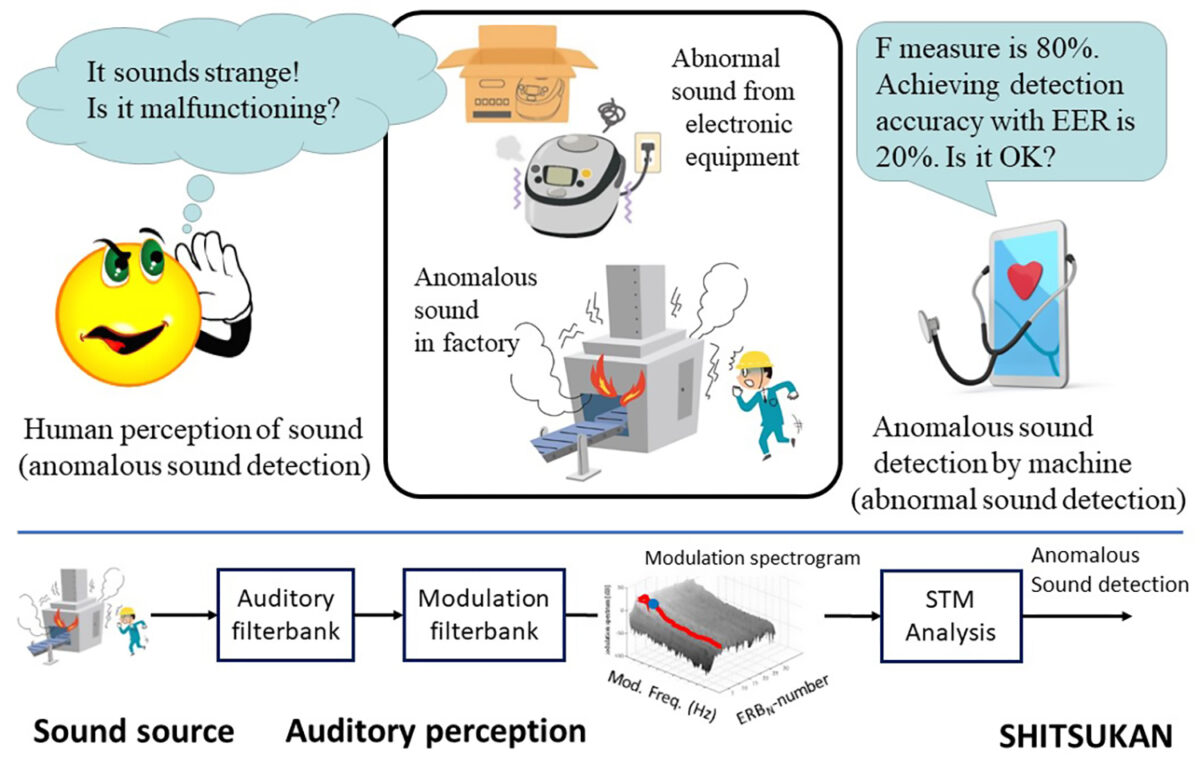D01-5 Understanding anomalous sound detection based on SHITSUKAN recognition mechanisms

This research aims to understand the mechanism of anomalous sound detection by humans as deep SHITSUKAN of sound, and to examine the feasibility of anomalous sound detection by machines based on deep SHITSUKAN. In particular, we examine what kind of acoustic cues humans use when detecting anomalous conditions from sounds, and how we can predict anomalous conditions based on our understanding of sound SHITSUKAN recognition. In this study, it is assumed that the sound emitted by the sound source under anomalous conditions is audibly perceived by humans through the sound environment and understood as the deep SHITSUKAN of the sound (anomalous or normal). In addition, we will investigate how the modulation spectrum of sound and its perceptual factors (roughness, fluctuation strength, sharpness, brightness, etc.) are related to anomalous sound detection as deep SHITSUKAN, by using spectral temporal modulation (STM) analysis. From these studies, we will understand the mechanism of human anomalous sound detection as deep SHITSUKAN of sound, and examine the feasibility of anomalous sound detection by machines equivalent to human anomalous sound detection based on this understanding.
